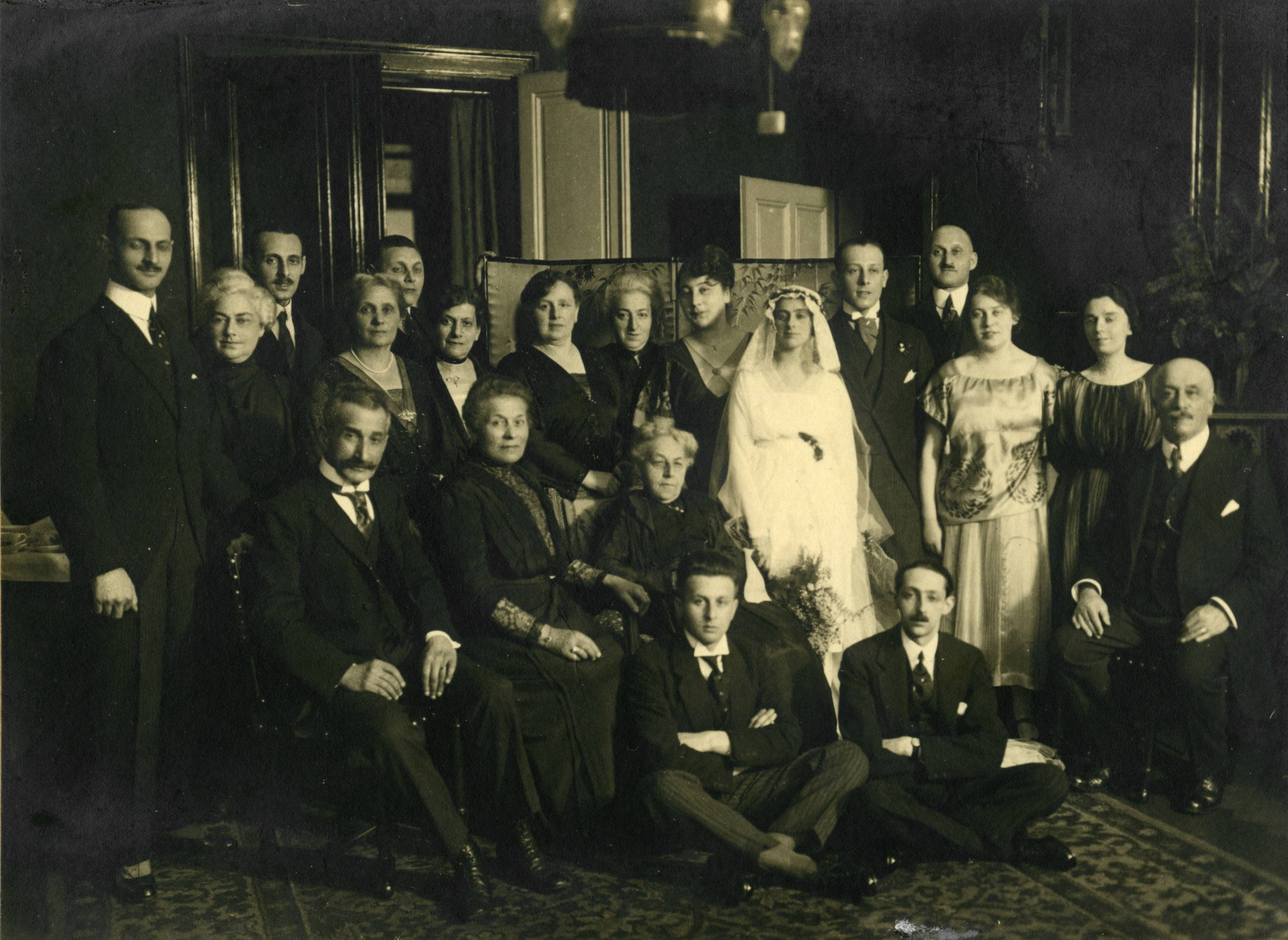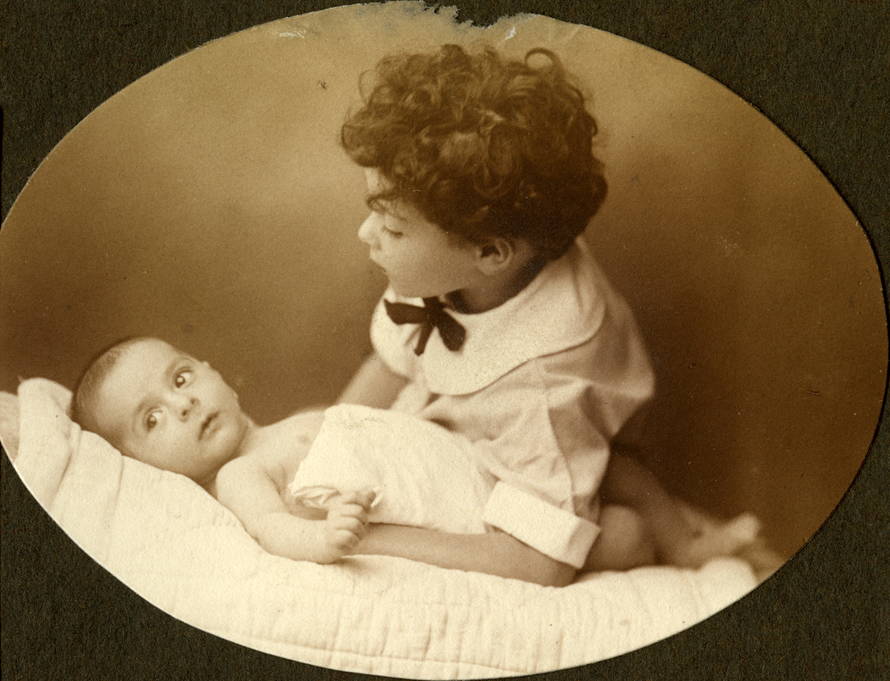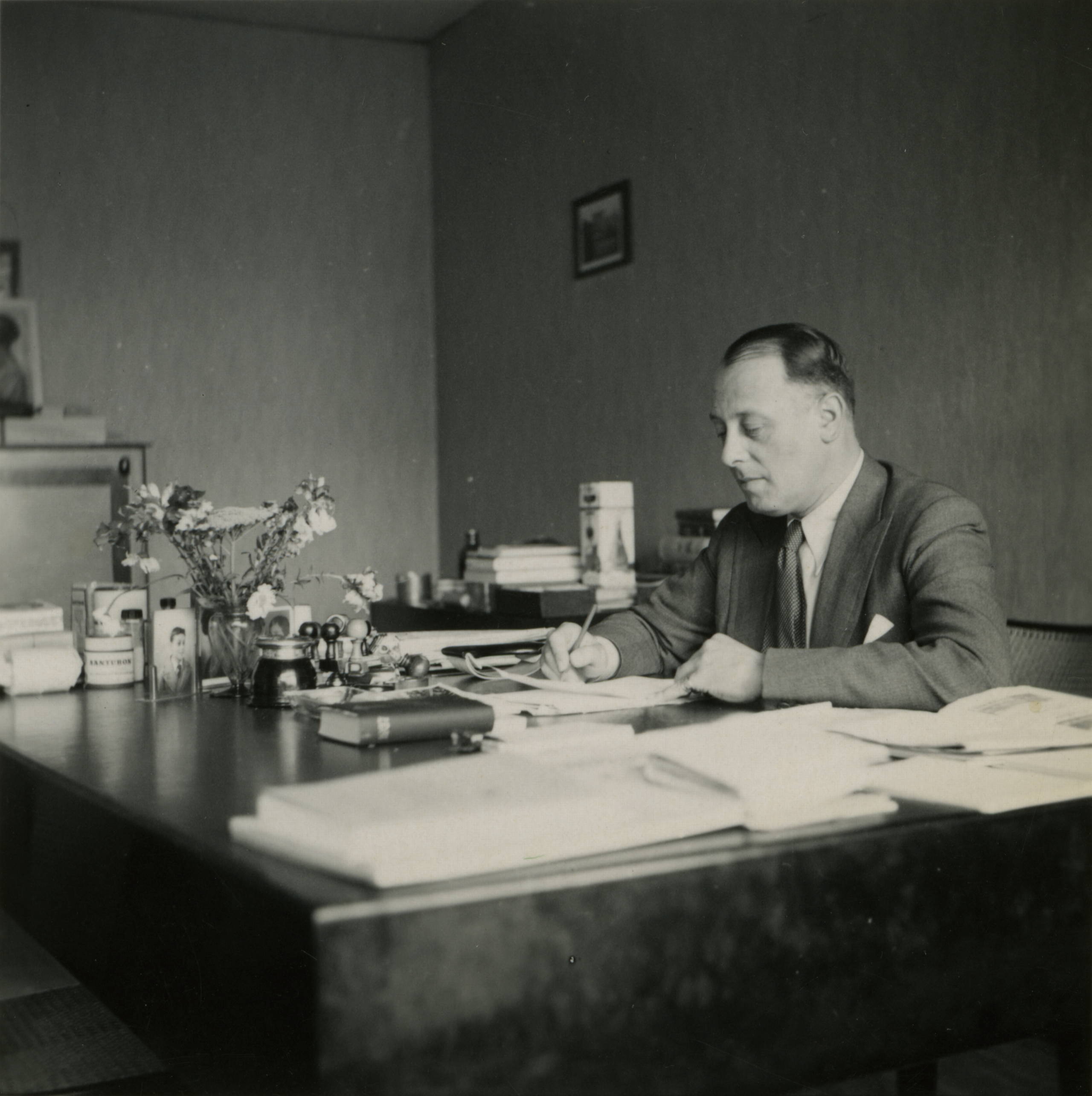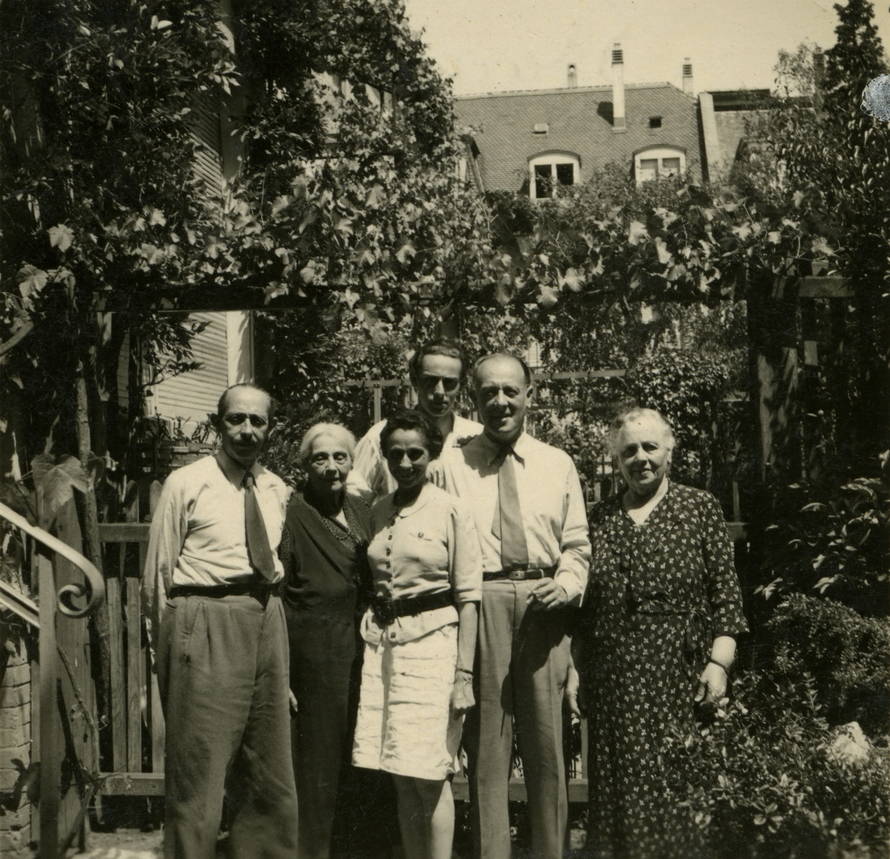Family
Leni Elias-Frank
Anne Frank’s Aunt Leni emigrated to Switzerland with her family in the early 1930s. They built up a new life in Basel. In 1952, 63-year-old Otto Frank moved to Basel to live with his sister and her family.

Helene Frank was born in Frankfurt on 8 September 1893 as the youngest of Alice and Michael Frank’s four children, a sister to Robert (1886), Otto (1889) and Herbert (1891). Her family called her Leni. Her parents placed great value on a good education, and like her three brothers Leni learned languages and attended private music lessons.

Leni, Frankfurt. © Anne Frank Fonds, Basel
When the First World War broke out in August 1914, the three brothers joined the German army, while Leni and her mother Alice volunteered in a Red Cross military hospital. Leni and her brother Otto kept up a close and heartfelt contact through letters, writing to each other about their wishes for the future and matters of the heart.
Leni met Erich Elias after the war. He was three years older than her and originally came from Zweibrücken, a small town in the Palatinate region. He worked as a stock trader on behalf of a bank at the Frankfurt Stock Exchange, where he made friends with Otto. In early 1921, Erich joined Michael Frank’s own bank as a shareholder. Soon afterwards, on February 16, the family celebrated the wedding of Leni and Erich Elias.

Wedding of Leni and Erich Elias-Frank, 1921. © Anne Frank Fonds, Basel
The young couple lived in the house of Helene’s widowed mother, Alice, as did Otto and Edith until 1927. Their son Stephan was born on 20 December 1921, and four years later Bernhard (Buddy) was born on 2 June 1925.

Buddy and Stephan, Frankfurt, 1925. © Anne Frank Fonds, Basel
Michael Frank’s banking business encountered major difficulties in the course of the economic crises of the Weimar Republic. As early as 1929, Erich Elias took action and left the family business. He found a new livelihood for himself and his family in the autumn of that same year in Basel, where he establishes a Swiss branch of Pomosin / Opekta, a company producing pectin for jam-making. Two years later Leni joined him with young Buddy, Stephan followed them in 1932, and finally, Leni’s mother, Alice, also moved to Basel in 1933.

Leni and Erich with their sons, Stephan and Buddy, and Leni's mother, Alice. © Anne Frank Fonds, Basel
Erich Elias’s professional and financial situation in Switzerland also ran into problems from 1936 onwards when the German company Pomosin insisted on purely Aryan members of the Board of Directors and Supervisory Board. Erich lost his position as Director but found work in the laboratory of the Zurich Pomosin branch.

Erich Elias in his office. © Anne Frank Fonds, Basel
In the meantime, the Elias family had been joined by Erich’s mother from Germany. In 1938, the family moved to a house at Herbstgasse 11 that would become a contact point for Jewish refugees: here they were supplied with addresses and contacts, and Leni Elias supported them when they needed to sell clothes and valuables. From this exchange service, Leni built up a business of her own: in 1943, she opened an antiques shop in Spalenvorstadt, which enabled her to contribute considerably to the income of the large family.

The Elias family in the garden of the house in Herbstgasse in Basel. © Anne Frank Fonds, Basel
Leni in front of her shop in Basel. © Anne Frank Fonds, Basel
Otto’s visits to Basel with his daughters went on for a some time after 1933, but were no longer possible after the outbreak of the Second World War. The Frank and Elias families were keeping contact through letters – until in July 1942, Leni received a strange card from Otto with birthday wishes (for her birthday in September!), which was intended to indicate that the Frank family in Amsterdam had gone into hiding.
This was the last news from Amsterdam. In May 1945, after the end of the Second World War, the Elias family in Basel received a first sign of life from Otto from Marseille. They then found out bit by bit that the Franks’ hiding place had been discovered, that they were deported and that Edith died in the Auschwitz concentration camp. They all waited for news about what had happened to Margot and Anne. In August, the final confirmation came that the two girls had died in the Bergen-Belsen concentration camp.
A first reunion with Otto took place in Basel on New Year’s Day 1946. Six years later, in 1952, Otto moved into Leni’s place and lived with the Elias family at Herbstgasse 11. There, in the attic room, he dedicated himself to the work from the increasing popularity of Anne’s Diary.
After three unsuccessful attempts, Leni and Erich Elias obtained Swiss citizenship in 1952. Leni continued to fund her whole family and the domestic staff with her antiques shop.

Leni in the door of her antiques shop in Spalenvorstadt in Basel. © Anne Frank Fonds, Basel
In 1965, her daughter-in-law Gerti Elias started to help her in the shop whenever she was in Basel. In 1984, Leni transferred the shop to Gerti, who continued it on her own for more than fifteen years.
In 1984, Erich Elias died at the age of 94. After an accident at the age of 92, Leni moved to the Jewish old people’s home La Charmille in Riehen, where she died on 2 October 1986.

«The whole family in Basel». Souvenir picture of Anne's. © Anne Frank Fonds, Basel